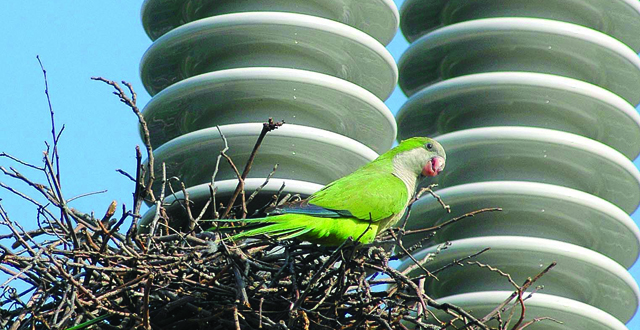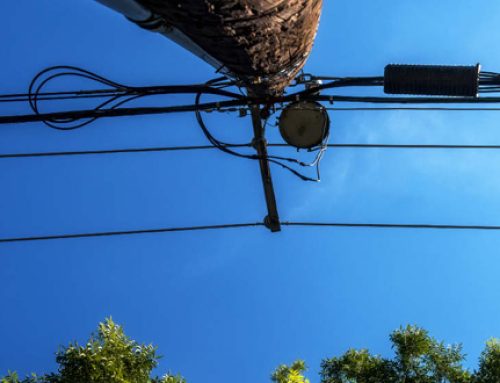Whether the animals are an annoyance or an adorable attraction is a matter of opinion. A number of White Rock area residents lean toward the latter. Edna Hemphill says some of her best memories with her late husband Edgar are tied to flocks of lime green monk parakeets that would gobble seeds and nuts that the couple would spread around their White Rock area backyard.
“Every afternoon in summer, we fed them peanuts. They would swoop down and eat up all the peanuts and then flock in the trees and squawk and sing and talk to their friends until it was almost dark,” Hemphill says.
One of her husband’s last requests before he died, she recalls fondly, was two bags of peanuts for the parakeets.
But for some, the creatures — South American natives who, experts speculate, likely were transported to the United States as pets — pose problems. While they can nest in trees, most monk parakeets prefer the metal branches of towering electrical equipment. One of the largest monk parakeet colonies in Dallas/Fort Worth is near White Rock Lake’s filter building. Relentless squawking and screeching emits from beyond a tall chain-link fence affixed with signage warning “DANGER,” “KEEP OUT” and “HIGH VOLTAGE.” A smaller sign reads, “Monk parakeet habitat coexisting with TUElectric. Habitat maintained in consultation with The Dallas Museum of Natural History and the Dallas County Audubon Society.” According to bird expert George Boyd, who can be found working at Wild Birds Unlimited on Mockingbird, the birds are attracted to the heat radiating off the power substations.
Indigenous to balmy areas such as Chile, southern Brazil and Argentina, the parrots are drawn to the heat, Boyd has said. When TXU utility workers moved in to remove nests, which they say can interrupt service and pose a fire hazard, neighbors protested. At the time, some seven years ago, the utility company worked with neighbors, the natural history museum and Audubon society to find humane solutions — near some power substation nests, they erected 40-foot platforms in an attempt to lure the birds from the electrical equipment.
The utility company generally allows nests to remain during the spring breeding season, works with bird rehabilitators during necessary removals, and installs netting and other deterrents at substations.






